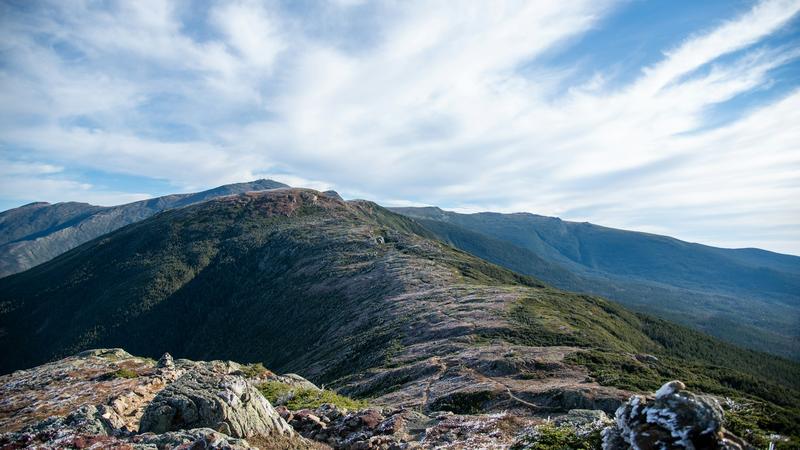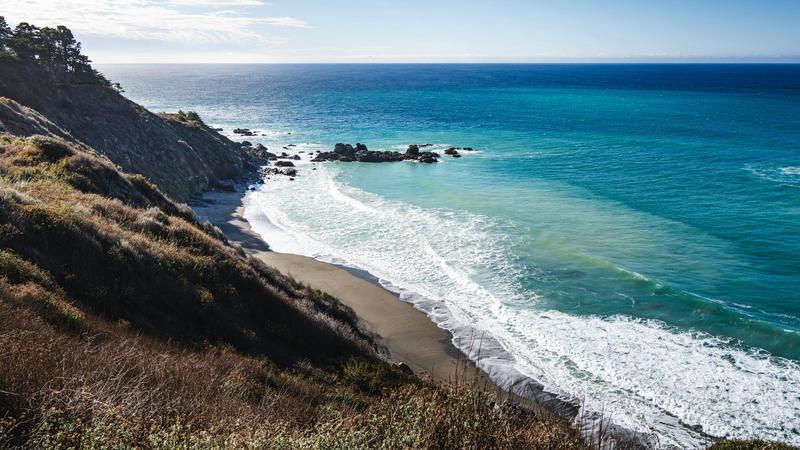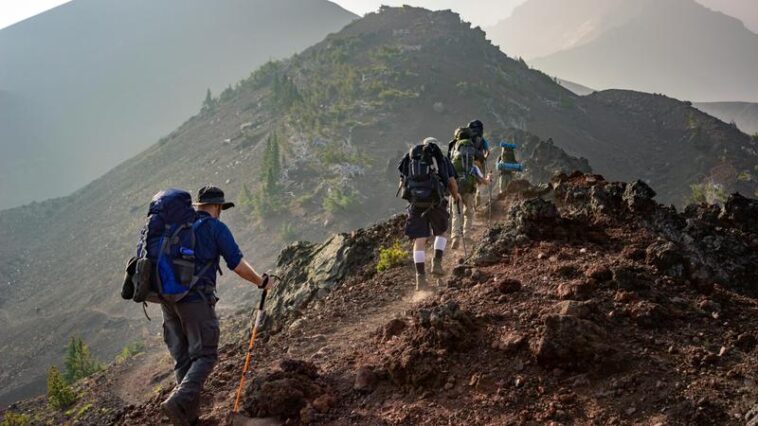There’s something kind of primal about setting foot on a trail that stretches into silence. Just trees, wind, and maybe the distant crack of a twig if you’re lucky. We’re talking about places that make you question why you spend so much time indoors. Trails that render your camera useless because no lens can capture what your eyes are seeing. The kind of hikes that leave you sitting in your car afterward, slightly stunned, wondering if you just experienced something sacred or if you’re just dehydrated.
Some will test your nerve. Others will test your lungs. All of them will remind you that this country still has wild places that haven’t been sanitized, streamlined, or turned into theme parks. Places where you can still feel genuinely small, not in a diminishing way, but in that rare, wonderful way that puts everything back into perspective.
Fair warning: These aren’t all easy Sunday strolls. Some require permits, planning, and a healthy respect for your own mortality. But that’s precisely what makes them worth it.
1. The Highline Trail – Glacier National Park, Montana

You’ll encounter some cliff exposure at the start, but the trail quickly opens into alpine meadows where wildflowers spill across the landscape. Mountain goats casually graze along the route, and the surrounding peaks create a backdrop that makes you feel wonderfully small. This 11.6-mile point-to-point hike never felt so cinematic.
Worth noting: The trail’s reputation for difficulty comes from its length rather than constant cliff exposure. Most of the route follows well-maintained paths across open terrain above Going-to-the-Sun Road. The dramatic cliff section is primarily at the beginning near Logan Pass; however, the final descent to ‘The Loop’ also includes a lengthy section of steep, exposed switchbacks. The majority of the hike remains a signature alpine meadow traverse.
2. Kalalau Trail – Kauai, Hawaii

This one demands your attention. You’re tiptoeing along red-dirt ridges above sheer cliffs that crash down to turquoise water. Rainforest humidity in your lungs, salt spray on your face, and a beach at the end that looks like it belongs in a dream you forgot you had. Dangerous when wet, heaven when dry.
Before You Go: This 11-mile one-way trek is widely considered one of America’s most demanding, earning its reputation as both incredible and dangerous. It requires serious preparation and respect for a trail that doesn’t forgive mistakes. Access is strictly controlled: you’ll need camping permits (secured months in advance) to hike the full trail, or separate day-use and parking reservations just to access the trailhead.
3. Angels Landing – Zion National Park, Utah

The beauty of Angels Landing is breathtaking, but it’s the thrilling, heart-pounding experience that sears it into your memory. Chains bolted into stone, a thousand-foot drop on either side, and just your heartbeat to keep you steady. Don’t do this one for the selfies. Do it because fear and awe live in the same zip code.
Worth noting: Angels Landing now requires advance permits through a lottery system on Recreation.gov. You can apply for seasonal permits months ahead or enter the Day-before Lottery, which opens at 12:01 AM and closes at 3:00 PM Mountain Time (MT). The 5.4-mile round-trip gains 1,488 feet of elevation, with the final half-mile featuring those famous chains along drops ranging from 800 to 1,000 feet.
4. Teton Crest Trail – Grand Teton National Park, Wyoming

Not a trail so much as a week-long masterpiece. Wildflower meadows, glacial lakes, jagged peaks that don’t seem real. If Ansel Adams painted in sweat, this would be his canvas. It’s remote, it’s hard, and it’s absolutely not for casuals, which makes it even better.
Before You Go: Getting on this trail requires serious planning, starting with the highly competitive permit system managed through Recreation.gov. The classic 35-45 mile route is a point-to-point journey, often started by taking the aerial tram from Teton Village to bypass a significant initial climb. Hikers must be self-sufficient and prepared for severe alpine weather, including potential snowfields on high passes well into July. Bear canisters are not just recommended; they are required for food storage throughout the backcountry.
5. Franconia Ridge Loop – White Mountains, New Hampshire

New England doesn’t usually get top billing, but this ridge earns it. You’re above the treeline for miles, striding across granite with 360-degree views that feel more like Scotland than the States. Moody clouds, winds that slap you awake, and a trail that makes you feel like you belong in a poem.
Worth noting: The ridge shares the White Mountains’ reputation for severe and unpredictable weather; conditions above the treeline can change with frightening speed. The classic 8.9-mile loop involves a strenuous 3,800 feet of elevation gain. For safety, most hikers travel counter-clockwise, ascending the steep and often slick Falling Waters Trail and descending via the more gradual Old Bridle Path.
6. Grinnell Glacier Trail – Glacier National Park, Montana

Yeah, Glacier gets two entries. Deal with it. This one’s shorter, but the payoff is unreal. You’ll pass teal lakes that look Photoshopped and end up staring at an actual glacier (while they still exist). It’s like the Earth showing off.
Before you go: While the whole hike is around 10.6 miles round-trip from the trailhead, many hikers opt to cut off roughly 3.4 miles by taking the concession boats across Swiftcurrent Lake and Lake Josephine. These boat tickets are extremely popular and should be booked well in advance. This trail travels through prime grizzly bear habitat, so carrying bear spray and knowing how to use it is considered essential. Due to its elevation, the final steep section to the glacier viewpoint often remains covered in snow and impassable until mid-to-late July.
7. Enchantment Lakes – Alpine Lakes Wilderness, Washington

The name sounds fake. The views are anything but. This is one of those trails that makes you want to whisper, just so you don’t break the spell. Crystal lakes tucked between granite cliffs, mountain goats showing zero fear, and silence that hums. Permit required. Soul-reset guaranteed.
Worth noting: Securing an overnight permit is notoriously difficult, with the lottery on Recreation.gov being one of the most competitive in the nation. As an alternative, many attempt the route as a single-day thru-hike—an extremely demanding undertaking of roughly 18 miles that requires a car shuttle between the Stuart Lake and Snow Lakes trailheads.
The crux of the hike is the infamous Aasgard Pass, a brutal, mile-long ascent that gains over 2,000 feet up a steep gully of rock and boulders—it is a scramble, not a maintained trail. For this reason, most thru-hikers travel from the Stuart Lake side to ascend Aasgard, avoiding a treacherous descent.
8. Lost Coast Trail – Northern California

No road. No crowds. Just raw Pacific coastline where the cliffs crumble and the waves roar loud enough to swallow your thoughts. You’re hiking on black sand one hour, dodging high tide the next. It’s not easy or safe, but it’s magical.
Before You Go: The single most critical element of this hike is the tide. You’ve got to carry a reliable tide chart and plan your daily mileage around low tide to safely navigate several multi-mile sections of the trail that become completely impassable at high tide. As a point-to-point hike, arranging a shuttle service in advance is essential. Overnight permits are required, booked via Recreation.gov, and bear canisters are mandatory for all food and scented items.
9. The Narrows – Zion National Park, Utah

Wading through knee-deep water with thousand-foot sandstone walls rising around you like a cathedral. Light bounces in ways your brain can’t explain. Every bend feels like a secret. Wear good shoes, bring dry bags, and expect to be humbled.
Worth noting: You can hike The Narrows in two primary ways. The most popular is “Bottom-Up,” a non-permit day hike starting from the Temple of Sinawava (accessed via the mandatory park shuttle for most of the year), where you can wade as far upriver as you wish before turning back. The more committing “Top-Down” option is a 16-mile point-to-point trek requiring a highly competitive wilderness permit and a private shuttle.
The single greatest risk is flash flooding—always check the official forecast and river flow rate before entering. Renting a gear package in Springdale—including canyoneering shoes, neoprene socks, and a sturdy walking stick—is a game-changer for stability and comfort on the slick, uneven riverbed.

